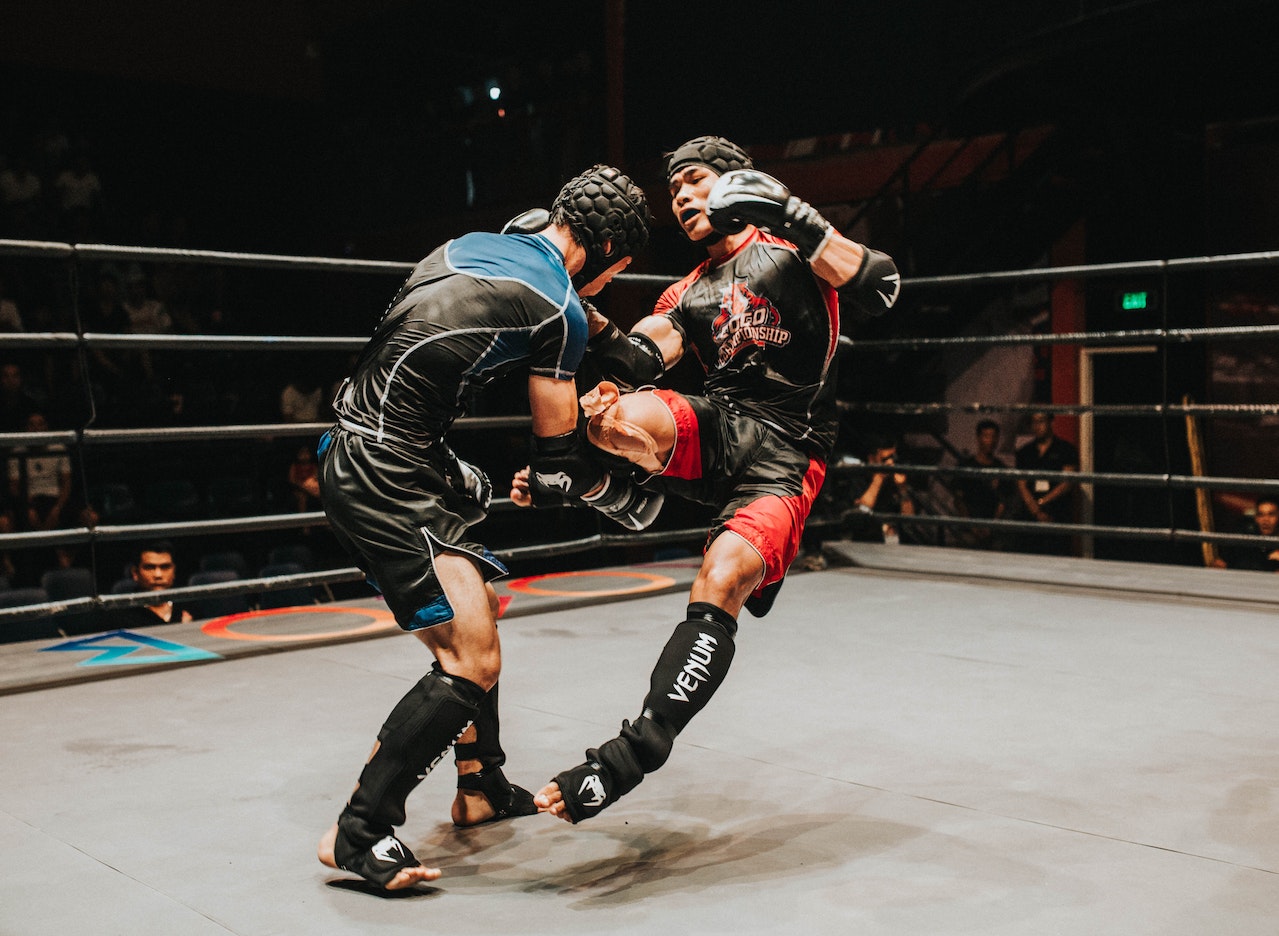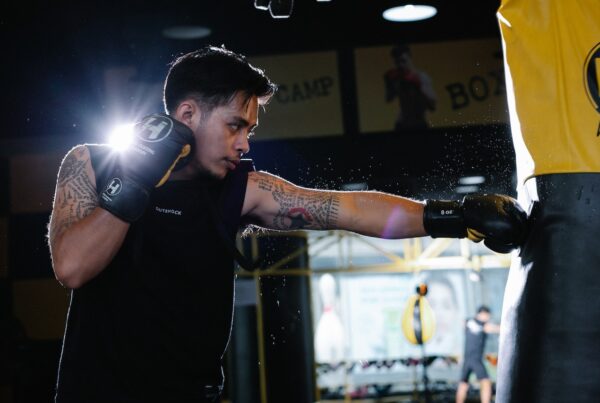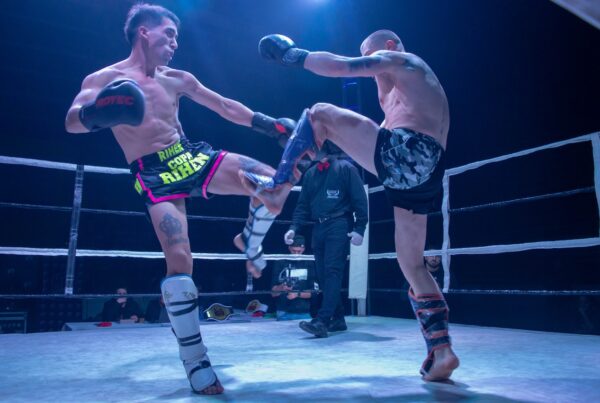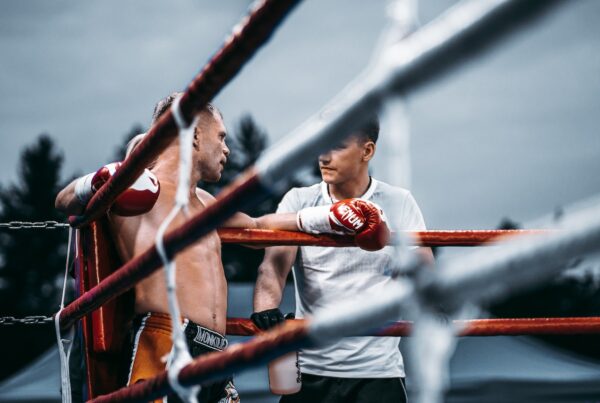Footwork is extremely important in fighting (especially boxing and MMA) because it allows you to move around quickly, dodge attacks and land heavier attacks yourself.
Footwork is one of the most important aspects in fighting. Perfecting your footwork is the key to becoming a successful fighter. Achieving proper footwork requires practicing the appropriate stance, footwork drills, and practice.
Several beginners often ask me why footwork is so important and how they can practice it, which is this article’s primary goal.
Table of Contents
6 Reasons Why Footwork Is Important
1. Footwork Allows You to Move Around Quickly
Footwork is essential in fighting because it allows you to move around quickly and be unpredictable to land punches and kicks. Your opponent will not be able to predict your moves, which will help you to avoid their punches and make you strike more.
Your footwork is crucial for moving and avoiding your opponent’s hits and using your body to generate the force necessary to hit your opponent back.
Avoiding punches and kicks is your best defense against your opponent in a boxing match. Your ability to move quickly and not let your opponent strike you will help you defeat your opponent.
If you can move quickly and avoid getting hit, you can also move swiftly and strike. It also enables you to punch the heavy bag as hard as possible during a training session.
2. Footwork Helps to Avoid Punches and Kicks
Footwork helps to avoid punches and kicks. By doing this, you’ll be able to hit your opponent more often and inflict more harm on them while taking less damage yourself. Fighting like boxing and MMA is not all about striking your opponent; it’s also about your ability to avoid as many hits as possible.
Good footwork puts you in a position to strike your opponent and keeps you out of harm’s way when they attack. If you move fast, your opponent will not be able to hit you.
They can’t hit you if you’re not there to be hit. The more you move, the harder it is for your opponent to land a hard punch. This will allow you to get hit less and sustain fewer injuries to hit more and cause more damage to your opponent.
Avoiding your opponent is the best defense you have in a fight. This is because if they can’t hit you, they can’t cause more damage to your body. This helps you stay standing longer than your opponent.
3. Footwork Helps to Move Away From an Opponent
Footwork helps to move away from an opponent and create space. It enables you to move closer and away from your opponent when needed. At the very least, you should constantly use hit-and-run tactics and boxing footwork to move out of striking distance.
Going in and out is the aim of having effective boxing footwork. Don’t waste your legs and footwork abilities by continuously moving forward or away from the opponent.
Using your legs to move in all directions and changing directions as necessary is the goal of a fight. Hence, you will not be able to get hit by your opponent if your footwork is excellent.
4. Footwork Improves Your Punching Power
Footwork can improve your punching power because it allows you to throw punches with more accuracy and power. Most of the strength comes from the legs. If you have strong leg muscles, you can hit harder.
You can not hit your opponent and cause damage if your punches are not hard enough. Footwork helps you have more powerful punches. The more balance and accuracy you have, the harder you will punch.
This is possible if your footwork is excellent. All the balance and focus abilities you gain by learning footwork help you move quickly and hit hard to knock down your opponent.
5. Footwork Improves Your Speed and Agility
Your speed matters the most in a boxing match. Your ability to move smoothly and quickly helps you hit more and avoid punches and kicks from your opponent. Footwork can improve your speed and agility, making it harder for your opponent to catch up to you.
The faster you move, the harder it is for your opponent to hit you. Footwork allows you to move close to your opponent, strike, and move away in three seconds. The quicker you move, the less you get hit. It makes it very difficult for your opponent to predict your next move if you continuously move backward and forward, left or right.
6. Footwork Improves Your Balance and Stability
Footwork can improve your balance and stability, which can help you avoid being knocked down. Balance is an essential component whenever the full body is in use. After being struck or landing on the balls of your feet, balance helps you stay standing.
If you’re off balance, you won’t be in a good position to strike an opponent when the chance comes or be able to land punches with your full force. You’ll be more vulnerable to receiving strikes from your opponent that you won’t be able to block.
To deliver a punch, you need to be centered and stable. Footwork helps you keep yourself steady and allows you to keep your body balanced. If your balance is good, you can keep yourself on your feet. It decreases your chances of falling and avoiding being knocked down by your opponent.
Also Read: Ultimate Guide To Rhythm In Boxing: 10 Improvement Tips
5 Ways To Practice Footwork For Martial Arts? (MMA & Boxing)
1. Footwork Drills
Footwork is how a boxer generally uses their legs and feet when engaging in a fight. You don’t require any expensive equipment. A room where you may move around freely and a set of MMA gloves so you can practice your fighting skills.
Here is a footwork drill you can perform:
- Set up a cone around 35 meters from the ladder.
- Use your left foot to leap through the ladder.
- Run to the cone as soon as you get to the top of the ladder.
- Go up the ladder in reverse.
- Turn around and use your right foot to climb the ladder.
2. Shadowboxing
Shadowboxing is a combat sport in which the participants punch the air as if they were an opponent. It is typically used to prepare the muscles before the person training engages in more intense exercise and is typically done in boxing.
Here are a few shadow boxing combos to keep you in practice even without an opponent:
- High Jab, Low Jab, Cross
- Cross, Lead Hook, Cross, Lead Upper
- Lead Hook, Cross, Lead Hook, Pivot, Jab, Jab, Cross
- Rear Upper, Lead Hook, Cross, Slip, Cross
- Jab, Slip, Jab, Rear Hook, Lead Upper, Duck
3. Combative Sparring
Many combat sports use combative sparring as a training method. Although the specific format varies, sparring is free-form. Only enough rules, agreements, or rules are provided to reduce harm.
Here are the rules for full combative sparring:
- All punches are allowed.
- Everything from jabs to crosses to hooks to uppercuts.
- Use 25% power and move slowly.
- Using quick offense or quick defense while moving is not allowed.
- Flinch blocking is not permitted.
4. Bag Work
A heavy bag training session works the arms, shoulders, chest, back, legs, and core equally, making it an efficient full-body exercise. Using a heavy bag allows you to practice punching the bag as hard as possible, gradually enhancing your upper body strength, power, and footwork.
Here is one of the few bag work drills you can perform:
- Jab
- Cross, straight right.
- Left Hook
- Right Hook
- Left Uppercut
- Right Uppercut
5. Sparring
Fighters practice punches, footwork, and defense without engaging in combat through sparring. Fighters can sharpen their abilities and response time through sparring. It offers a more realistic experience for the skills that are frequently first practiced on punching bags.
Here is how you can perform 1-2 sparring:
This type of sparring is really light and only uses crosses and jabs. Your blows should be so light that even if they land flat on your face, they won’t hurt at all. The attack is a priority; defense is not. Both fighters should aim to stay out of each other’s punching range and throw more punches than they move.
How Do Fighters Get Their Feet Light? (Not Flat Footed)
Fighters get light feet by staying on their toes and never on their heels. Staying on your toes allow you to move and react faster to incoming punches. It’s also important to understand where to put the weight of your body.
When going for a punch or kick, place your weight on the front toes. Once you attach, immediately shift your weight to get out of range. This in-and-out of range movements will make you seem light footed.
Fighters commonly practice rope skipping to get their feet light. Regular sparring and shadowboxing can also help you.
Great footwork helps the fighters move in and out of range. It helps them move faster and with less effort. This motion helps them to get lighter on their feet, as they can avoid punches and kicks from the opponent and hit them in a way that is unpredictable to the opponent.
What Is Considered Good Footwork?
A fighter who’s considered to have good footwork knows how to use his feet properly as the first line of defense, as well as to engage and close the distance when necessary, gain momentum and tempo, create angles and opportunities, and other things.
Practically speaking, a good footwork boxer is one who masterfully uses his feet to enhance every aspect of his performance.
FAQs
Q: Is Footwork the Best Defense?
The best type of defense is good footwork. It is more difficult for opponents to knock you down when you move around the ring with good footwork. Your opponents can’t hit you if you’re not in the right place for them to hit you.
Q: Which Martial Art Has the Best Footwork?
Boxing is the martial art that focuses the most on footwork while training. Boxing footwork helps boxers keep their balance. Additionally, it is essential to deliver punch combinations that increase accuracy with each strike and position boxers for offensive moves. The success of champion boxers is sometimes related to their excellent footwork.






